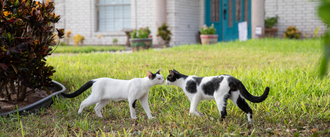Helping Cats Where They Are

Find your local campaign
Your Location
Campaigns (21)
-
OrrvilleSaving Cats in Our CommunityIn order to create compassionate no-kill communities and achieve no-kill for cats nationwide, we need communities to support lifesaving programs like Trap-Neuter-Return [TNR]. The process is simple: cats are caught (often by volunteers), evaluated by veterinarians, vaccinated, spayed or neutered, and returned to their original outdoor homes, unable to have kittens. These programs are also proven to be the most cost-effective, veterinarian-approved, and animal-friendly solution for controlling and reducing free-roaming cat populations.169 of 200 SignaturesCreated by Angie L.

-
AugustaSaving Cats in Our CommunityIn order to create compassionate no-kill communities and achieve no-kill for cats nationwide, we need communities to support lifesaving programs like Trap-Neuter-Return [TNR]. The process is simple: cats are caught (often by volunteers), evaluated by veterinarians, vaccinated, spayed or neutered, and returned to their original outdoor homes, unable to have kittens. These programs are also proven to be the most cost-effective, veterinarian-approved, and animal-friendly solution for controlling and reducing free-roaming cat populations.167 of 200 SignaturesCreated by Meredith C.
-
Saving Cats in Our Community - Beeville, Texas, Bee CountyIn order to create compassionate no-kill communities and achieve no-kill for cats nationwide, we need communities to support lifesaving programs like Trap-Neuter-Return [TNR]. The process is simple: cats are caught (often by volunteers), evaluated by veterinarians, vaccinated, spayed or neutered, and returned to their original outdoor homes, unable to have kittens. These programs are also proven to be the most cost-effective, veterinarian-approved, and animal-friendly solution for controlling and reducing free-roaming cat populations.164 of 200 SignaturesCreated by Dara C.
-
Apple ValleyHelp Apple Valley CatsIn order to create compassionate no-kill communities and achieve no-kill for cats nationwide, we need communities to support lifesaving programs like Trap-Neuter-Return [TNR]. The process is simple: cats are caught (often by volunteers), evaluated by veterinarians, vaccinated, spayed or neutered, and returned to their original outdoor homes, unable to have kittens. These programs are also proven to be the most cost-effective, veterinarian-approved, and animal-friendly solution for controlling and reducing free-roaming cat populations.149 of 200 SignaturesCreated by Shelly S.
-
CharlotteSaving & Caring For Cats in Our CommunityIn order to create compassionate no-kill communities and achieve no-kill for cats nationwide, we need communities to support lifesaving programs like Trap-Neuter-Return [TNR]. The process is simple: cats are caught (often by volunteers), evaluated by veterinarians, vaccinated, spayed or neutered, and returned to their original outdoor homes, unable to have kittens. These programs are also proven to be the most cost-effective, veterinarian-approved, and animal-friendly solution for controlling and reducing free-roaming cat populations.145 of 200 SignaturesCreated by Annastasia G.
-
Los AngelesLos Ángeles apoya a su comunidad y a sus gatosCasi 10 años después de que el Consejo Municipal de Los Angeles votaron para hacer de la ciudad una comunidad donde no se matan a perros o gatos innecesariamente, la lucha continúa. Aunque el umbral del 90% se alcanzó para los perros hace cuatro años, los esfuerzos para salvar vidas de los gatos han sido mucho más desafiantes. Sin embargo, un programa actualmente en consideración probablemente empujaría a Los Angeles a la cima. La mayor barrera para salvar a más gatos ha sido una orden judicial que impide a la Ciudad de participar en los programas de CES (Capturar, Esterilizar y Soltar). Como resultado, la cantidad de gatitos que ingresan a los refugios de Los Angeles, a aumentando en los últimos años, agotando los recursos disponibles. El mes pasado, la Ciudad público los detalles de su tan esperado programa para gatos de la ciudad, que asigna fondos para la esterilización de 20,000 gatos que deambulan libremente al año, además de los fondos ya asignados para las mascotas de los residentes. El proceso es simple: los gatos son capturados, evaluados por veterinarios, esterilizados, vacunados y devueltos a su comunidad. Esto promete ser un cambio de juego sin obstaculizar ninguno de los avances ya realizados -- revocando la orden judicial y allanando el camino para que Los Ángeles se convierta en la comunidad más grande del país en donde no se matan a perros y gatos innecesariamente.121 of 200 SignaturesCreated by Carol R.

-
HarrisonSaving Cats in Our Community - Clare County MichiganIn order to create compassionate no-kill communities and achieve no-kill for cats nationwide, we need communities to support lifesaving programs like Trap-Neuter-Return [TNR]. The process is simple: cats are caught (often by volunteers), evaluated by veterinarians, vaccinated, spayed or neutered, and returned to their original outdoor homes, unable to have kittens. These programs are also proven to be the most cost-effective, veterinarian-approved, and animal-friendly solution for controlling and reducing free-roaming cat populations.117 of 200 SignaturesCreated by Erika E.
-
RiversideApoye programas de gatos comunitarios en Riverside¿Porque esto es importante? Los gatos de la comunidad (también conocidos como gatos callejeros o ambulantes) corren el riesgo de perder la vida simplemente porque han establecido un hogar en su comunidad. En muchos casos, son llevados a refugios locales, donde es poco probable que los adopten porque muchos de ellos no están socializados con la gente. Muchos de estos gatos están prosperando viviendo dentro su cominidad porque alguien en su comunidad los cuida. Ahí es donde entran los programas comunitarios para gatos. Estos programas usan Capturar, Esterilizar y Soltar (CES) para salvar gatos. El proceso es simple: los gatos de la comunidad son atrapados, evaluados por veterinarios, vacunados, esterilizados o castrados. Se les cortan un poco de la puntita de una oreja para identificarlos como esterilizados y devueltos a sus comunidades, sin poder tener gatitos. Hace tres años, en asociación con Best Friends, el Departamento de Servicios para Animales del Condado de Riverside adoptó este enfoque al dar la bienvenida a un programa comunitario para gatos en su ubicación de Coachella Valley Animal Campus. A principios de 2020, se esterilizaron y castraron hasta 10,000 gatos elegibles a través del programa. El trabajo continúa hoy a menor escala debido a las limitaciones físicas y financieras provocadas por la pandemia, dejando a muchos miembros de la comunidad y gatos sin este recurso necesario. Puede ayudar a salvar las vidas de los gatos de la comunidad y apoyar a las personas que los cuidan, abogando por programas comunitarios de gatos y otros esfuerzos para salvar vidas que se implementarán en todo el condado de Riverside. ¡Gracias por apoyar a los gatos comunitarios en su vecindario y por todo lo que hacen por los animales!116 of 200 SignaturesCreated by Carol R.

-
LaredoApoya a los animales y la comunidad de Laredo¿Porque esto es importante? Usted es una parte fundamental para garantizar que las mascotas y las personas tengan acceso a programas y recursos positivos. Es importante que sus representantes sepan que salvar gatos y perros es importante para la gente de Laredo. La buena noticia es que puede ser parte del apoyo a programas positivos que funcionan en Texas. Algunos ejemplos incluyen la programación comunitaria para gatos (ver más abajo), la programación de crianza (para proporcionar alojamiento temporal a las mascotas antes de encontrar sus hogares permanentes) y servicios y recursos progresivos de campo para garantizar que las personas tengan lo que necesitan para mantener a sus mascotas. La comunidad en su conjunto (refugio, mascotas, personas) puede abogar por estos programas y más recursos para crear un cambio para los animales y quienes los cuidan. Más sobre la programación comunitaria de gatos: Los gatos de la comunidad (también conocidos como gatos callejeros o comunitarios) corren el riesgo de perder la vida simplemente porque han establecido un hogar al aire libre. En muchos casos, son llevados a refugios locales, donde es poco probable que los adopten porque muchos de ellos no están socializados con la gente. Ahí es donde entran los programas comunitarios para gatos. Estos programas usan Atrapar- Esterilizar- Regresar (AER o TNR, por sus siglas en inglés) para salvar gatos. El proceso es simple: los gatos de la comunidad son atrapados, evaluados por veterinarios, vacunados, esterilizados o castrados. Se les cortan un poco de la puntita de una oreja para identificarlos como esterilizados y devuelven a sus comunidades, sin poder tener gatitos. Y estos programas ya están funcionando en todo el país. Los habitantes de Laredo merecen los programas de AER (Atrapar- Esterilizar- Regresar), que son respetuosos con los animales, eficiente en costos y reducen la carga que pesa sobre el refugio de animales. -------------------------------- Al abogar por estos programas y continuar colaboración con otras organizaciones comunitarias, puede ser parte de la creación de una comunidad más saludable para las mascotas y las personas. Juntos podemos hacer cambios sostenibles que salven vidas mientras creamos un marco de apoyo para las mascotas de Laredo y las personas que se preocupan por ellas. Gracias por apoyar a los perros y gatos de Laredo.113 of 200 SignaturesCreated by Carol R.

-
Saving Cats in Our CommunityIn order to create compassionate no-kill communities and achieve no-kill for cats nationwide, we need communities to support lifesaving programs like Trap-Neuter-Return [TNR]. The process is simple: cats are caught (often by volunteers), evaluated by veterinarians, vaccinated, spayed or neutered, and returned to their original outdoor homes, unable to have kittens. These programs are also proven to be the most cost-effective, veterinarian-approved, and animal-friendly solution for controlling and reducing free-roaming cat populations.98 of 100 SignaturesCreated by Jennifer G.

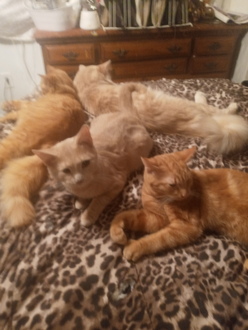
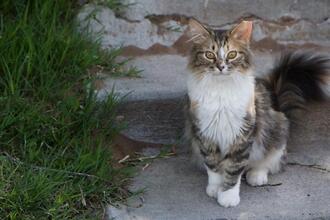

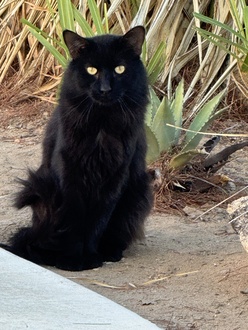

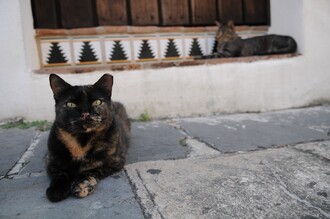

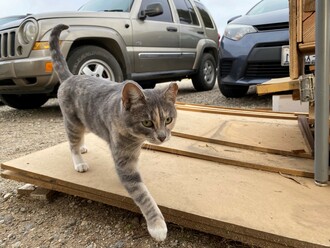.jpg)
